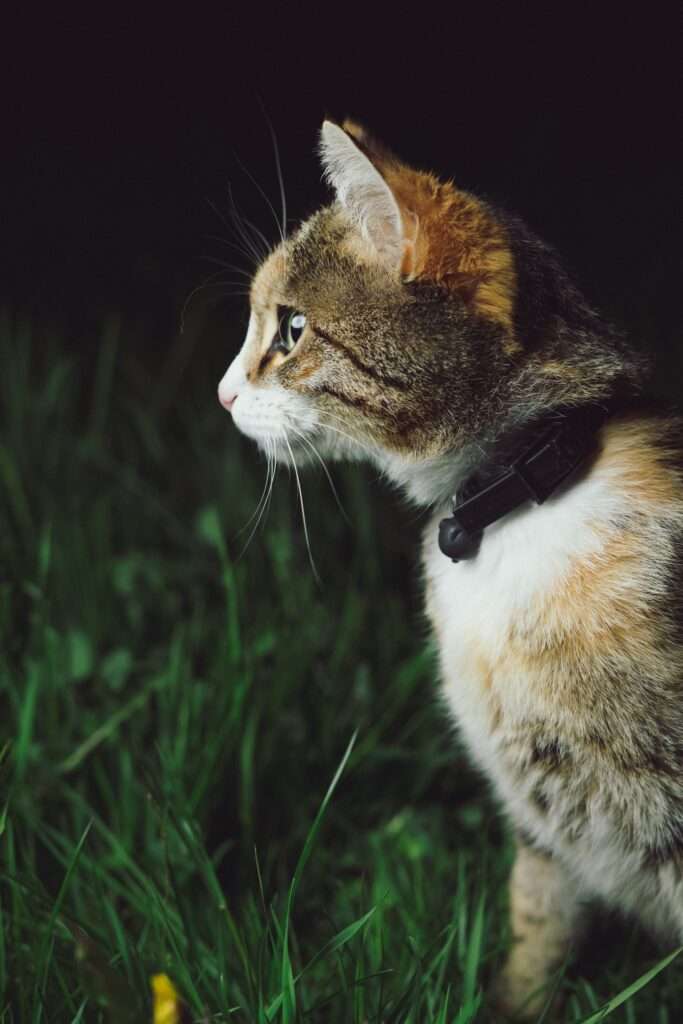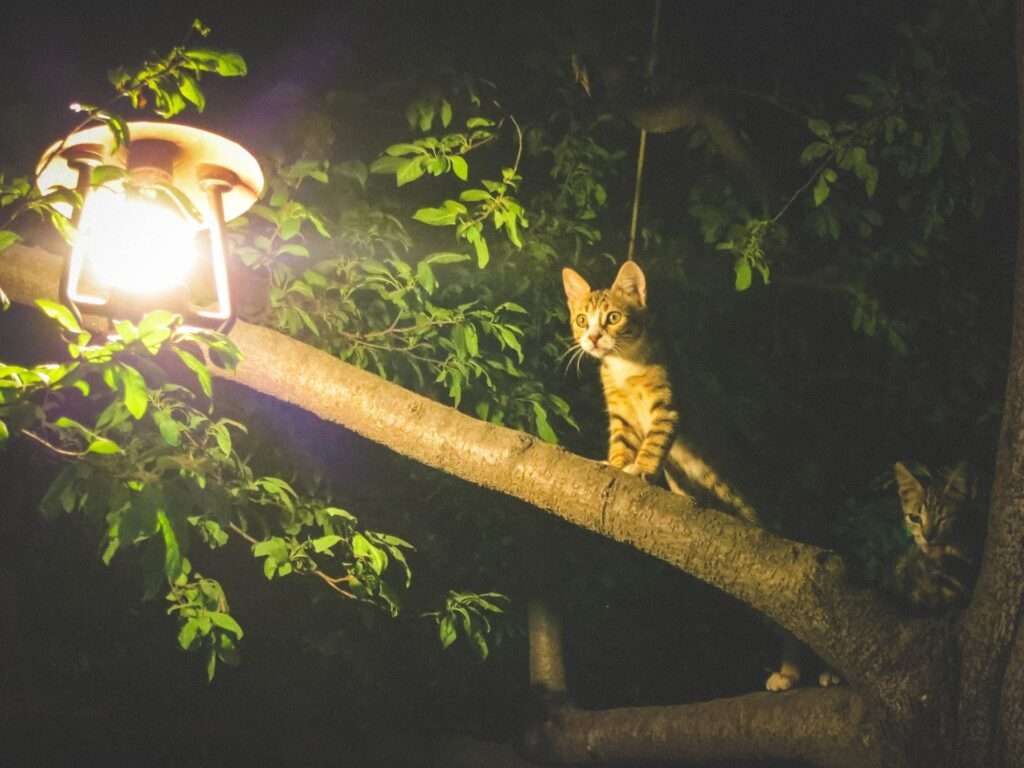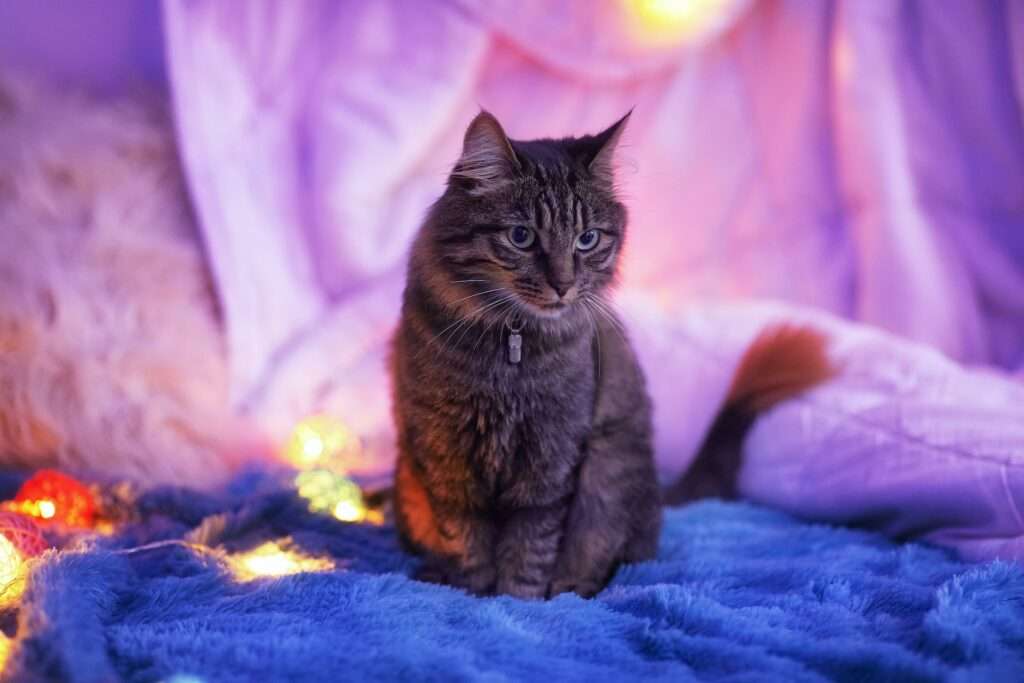Are Cats Nocturnal? Separating Fact from Fiction
Are cats truly creatures of the night? Let’s embark on a captivating journey to unravel the enigmatic world of feline nocturnality and delve into the intricate nature of our beloved companions. In this insightful blog article, we will explore the question “Are cats nocturnal?” from various angles, shedding light on their innate instincts, evolutionary background, behavioral patterns, and the practical implications for devoted pet owners.
As feline enthusiasts, we are often mystified by the mysterious allure of cats and their unique behaviors. Understanding their activity patterns is crucial to ensuring their well-being and providing them with an enriching environment. So, grab your cup of tea and join us as we uncover the fascinating truth behind cats’ nocturnal tendencies.
Defining Nocturnality
When pondering the nocturnal habits of cats, it’s essential to comprehend the concept of nocturnality itself. Just as the sun sets and darkness descends, certain animals come to life, thriving under the cloak of night. But do our beloved feline friends truly fall into this category?
True nocturnal animals, such as bats and owls, exclusively conduct their activities during the nighttime hours. On the other hand, diurnal creatures, like squirrels and songbirds, are active during the day. However, cats occupy an intriguing middle ground, displaying crepuscular tendencies that warrant a closer examination.
Crepuscular species are most active during twilight—the periods of dawn and dusk—when the world transitions between light and darkness. It is during these junctures that cats showcase their innate prowess as hunters. This twilight time provides them with a unique advantage, allowing them to harness their exceptional sensory abilities to stalk and pounce on their unsuspecting prey.
Intriguingly, this crepuscular behavior is deeply rooted in the ancestry of domestic cats. To fully understand their activity patterns, we must journey back to their wildcat ancestors who roamed the untamed landscapes. These formidable hunters, such as the African wildcat, thrived in various habitats and adapted their behaviors to optimize their chances of survival.
Join us in the upcoming sections as we unravel the captivating world of feline nocturnality. Prepare to be amazed by the astounding adaptations cats possess, their intricate circadian rhythms, and the complex interplay between their wild instincts and their domesticated lives.
The Natural Instincts of Felis catus
To comprehend the nocturnal tendencies of our feline companions, we must explore the deep roots of their ancestry. Domestic cats, known scientifically as Felis catus, trace their lineage back to wildcat ancestors who roamed the vast landscapes with unparalleled grace and agility.
These wildcat ancestors, such as the African wildcat, possessed an extraordinary set of natural instincts and hunting prowess. Their survival in the wild depended on their ability to stalk, chase, and capture prey under the cover of darkness. This rich ancestral heritage has indelibly shaped the behavior of our domesticated feline friends.
While modern-day cats may not face the same challenges as their wild ancestors, their instincts remain deeply ingrained. Even the most pampered house cat carries within them the echoes of their predecessors’ hunting prowess. It is this intrinsic drive that often manifests during their crepuscular hours, as they awaken their primal instincts and engage in playful antics reminiscent of their wild counterparts.
The Anatomy of a Night Hunter

One cannot truly understand the nocturnal tendencies of cats without exploring the remarkable adaptations that have evolved within their anatomy. Cats possess a mesmerizing array of physical features that enable them to excel in low-light environments and master the art of hunting under the moonlit sky.
One of their most renowned assets is their exceptional night vision. Their eyes are adorned with a specialized structure called the tapetum lucidum, a reflective layer that enhances the utilization of available light. This incredible adaptation allows cats to make the most of even the faintest glimmers of illumination, transforming the night into a world of vivid hues and heightened detail.
In addition to their extraordinary vision, cats possess acute hearing abilities, finely tuned to detect the faintest rustles and whispers in the night. Their large, mobile ears capture and amplify sound waves, granting them a distinct advantage when it comes to pinpointing the location of their prey.
Another fascinating aspect of feline anatomy is their remarkable whiskers, also known as vibrissae. These delicate sensors extend from their faces, providing them with crucial information about their surroundings. Whiskers are exquisitely sensitive to even the slightest changes in air currents, enabling cats to navigate their environment with grace and precision, even in the darkest corners.
These remarkable adaptations, combined with their innate instincts, create a feline predator par excellence. Whether it’s their piercing gaze that penetrates the shadows or their swift, silent movements, cats embody the essence of a masterful night hunter.
The Circadian Rhythms of Cats
To understand the nocturnal behaviors of our feline friends, we must delve into the fascinating realm of their circadian rhythms. Just like humans, cats possess internal biological clocks that regulate their sleep-wake cycles and dictate their activity patterns throughout the day.
Typically, cats are considered crepuscular creatures, meaning they are most active during the twilight hours of dawn and dusk. These periods of transition offer the ideal conditions for cats to engage in their natural hunting instincts. As the sun sets, their energy levels rise, and they embark on explorations, play sessions, and hunting simulations.
Understanding the influence of various factors on a cat’s sleep-wake cycle is crucial. Age, health, and environmental conditions all play significant roles. Kittens, for instance, have higher energy levels and may exhibit more frequent bursts of activity, including nighttime playfulness. On the other hand, senior cats may experience changes in their sleep patterns, potentially becoming more prone to daytime napping.
Health conditions can also impact a cat’s sleep-wake cycle. Discomfort, pain, or certain illnesses may disrupt their natural rhythms and cause changes in their activity levels. If you notice any significant changes in your cat’s sleep patterns or overall behavior, it’s always best to consult with a veterinarian to rule out any underlying health concerns.
Crepuscular vs. Nocturnal: Debunking the Misconceptions

As we explore the world of feline nocturnality, it’s essential to differentiate between crepuscular and nocturnal behaviors. Cats are often mistakenly labeled as strictly nocturnal creatures, when in fact, they exhibit crepuscular tendencies that set them apart from true night-dwelling species.
Nocturnal animals, such as bats and owls, are exclusively active during the night, relying on their specialized adaptations to navigate and hunt in the darkness. In contrast, cats are most active during the twilight hours of dawn and dusk. This crepuscular behavior is deeply rooted in their evolutionary heritage and offers distinct advantages for their hunting prowess.
Cats’ crepuscular nature allows them to leverage the transitional periods between light and darkness. During these times, they can effectively utilize their acute senses, exceptional night vision, and heightened hearing to stalk and capture prey. This behavior aligns with their wild instincts and reflects their adaptability to various environmental conditions.
It’s important to recognize that cats’ crepuscular tendencies can vary to some degree based on individual differences and environmental factors. Some cats may exhibit more nocturnal behavior, while others may have a stronger inclination toward daytime activity. Ultimately, understanding and accepting the crepuscular nature of our feline companions will help us create a harmonious environment that accommodates their natural instincts.
Stay tuned as we continue to explore the domestic cat’s adaptation to our human lifestyles, providing practical insights for cat owners seeking to nurture a balanced coexistence with their crepuscular companions. Together, we can create an enriching environment that celebrates the unique nocturnal nature of cats while ensuring their well-being and happiness.
The Domestic Cat’s Adaptation to Human Lifestyle
As our feline friends have transitioned from the wild to the cozy confines of our homes, they have remarkably adapted their instincts to coexist with humans. Domestication has shaped their behavior, allowing them to thrive in our unique human-centric environments.
Cats have evolved to synchronize their activity patterns with our daily routines. They adjust their sleep-wake cycles to align with the habits of their human companions. This adaptation is a testament to the deep bond between cats and humans, as they seek companionship and engage in social interactions during the waking hours of their human families.
However, it’s important to remember that cats still retain their inherent crepuscular nature. While they may adjust their activity levels to accommodate our schedules, they may naturally display increased energy and playfulness during the dawn and dusk hours. Recognizing and respecting these natural tendencies can contribute to a harmonious coexistence between cats and their human caregivers.
Practical Implications for Cat Owners
Understanding and embracing the crepuscular nature of cats can significantly enhance the well-being of our feline companions. Here are some practical implications and considerations for cat owners:
- Environment Enrichment: Provide ample opportunities for mental and physical stimulation during the crepuscular hours. Interactive toys, puzzle feeders, and climbing structures can engage your cat’s natural instincts and keep them mentally and physically active.
- Playtime and Interaction: Dedicate quality play sessions with your cat, especially during their peak activity periods. Engage them in interactive play with toys that mimic hunting behaviors, satisfying their predatory instincts and providing a healthy outlet for their energy.
- Scheduled Feedings: Consider adjusting your cat’s feeding schedule to align with their natural crepuscular tendencies. Providing meals during their peak activity times can help satisfy their hunger and contribute to a balanced routine.
- Environmental Factors: Create a cat-friendly environment that mimics natural lighting conditions. During the evening hours, dim the lights gradually to signal the approaching nighttime and help your cat wind down for restful sleep.
- Sleep Space: Ensure your cat has a comfortable and cozy sleep space away from distractions. Provide a quiet, secluded area where they can retreat and rest during the daytime hours when you may be more active.
- Nighttime Behavior: Prevent unwanted nighttime behaviors, such as excessive meowing or scratching, by redirecting their attention to appropriate toys or engaging them in play sessions prior to bedtime. This can help expend their energy and promote a more peaceful night’s sleep.
By incorporating these practical considerations into your cat’s daily routine, you can create an environment that supports their natural instincts and promotes their overall well-being. Remember, each cat is unique, and understanding their individual preferences and needs is key to fostering a harmonious relationship.
The Role of Age, Health, and Individual Variations

When exploring the nocturnal tendencies of cats, it is essential to consider the role of age, health, and individual variations. These factors can influence their activity patterns and sleep-wake cycles, requiring tailored attention and care.
- Age: Kittens are typically more active and prone to engaging in nighttime play. As they grow older, their energy levels may stabilize, and they may develop a more consistent sleep routine. Senior cats, on the other hand, may experience changes in their sleep patterns and may require extra comfort and support during their resting hours.
- Health: Cats with certain health conditions, such as pain, discomfort, or cognitive changes, may experience disruptions in their sleep patterns. If you notice any significant changes in your cat’s sleep or activity levels, consult with your veterinarian to address any underlying health concerns.
- Individual Variations: Just like humans, cats have unique personalities and preferences. Some may lean more toward nocturnal tendencies, while others may exhibit a greater inclination for daytime activities. Understanding and respecting these individual variations can help foster a harmonious coexistence between you and your feline companion.
Promoting a Harmonious Lifestyle: Coexistence with Nocturnal Cats
Living harmoniously with a nocturnal cat requires patience, understanding, and a few adjustments to ensure both you and your feline friend can enjoy restful sleep and fulfilling companionship.
- Establish Routine: Establish a consistent routine that includes interactive play and mental stimulation during the evening hours. This can help redirect your cat’s energy and engage their hunting instincts, promoting a more balanced sleep-wake cycle.
- Comfortable Sleep Environment: Create a cozy and comfortable sleep environment for your cat. Provide a designated sleep space away from any disturbances, ensuring they have a peaceful area to rest during the day.
- Soundproofing: Consider soundproofing measures to minimize noise disruptions during your cat’s sleep hours. This can include using white noise machines, closing windows, or creating a quiet space where they can retreat and rest undisturbed.
- Nighttime Enrichment: Offer appropriate nighttime enrichment activities, such as puzzle toys or treat-dispensing toys. This can keep your cat mentally stimulated during their active hours and help prevent unwanted behaviors.
- Communication and Bonding: Strengthen your bond with your cat through regular interactions and affectionate moments. Engaging in gentle play or grooming sessions before bedtime can help create a sense of security and relaxation.
- Consultation with a Veterinarian: If your cat’s nocturnal behaviors become disruptive or concerning, consult with a veterinarian. They can assess your cat’s overall health and behavior and provide guidance on managing their sleep-wake cycles.
By incorporating these strategies and promoting a harmonious lifestyle, you can nurture a fulfilling and peaceful coexistence with your nocturnal cat. Embracing their natural tendencies while finding a balance that accommodates both your needs and theirs will foster a strong and loving bond.
Conclusion
In conclusion, the question “Are cats nocturnal?” unveils a complex tapestry of natural instincts, evolutionary adaptations, and individual variations. While cats are often labeled as nocturnal creatures, their crepuscular tendencies set them apart, showcasing their exceptional skills as twilight hunters.
Understanding and embracing the crepuscular nature of cats allows us to provide an environment that supports their innate instincts and promotes their overall well-being. By considering factors such as age, health, and individual variations, we can tailor our care to meet their unique needs.
Living harmoniously with a nocturnal cat requires patience, flexibility, and a willingness to adapt. By establishing routines, creating comfortable sleep environments, and promoting bonding moments, we can cultivate a sense of harmony and balance in our homes.
So, as we embark on this journey alongside our nocturnal companions, let us celebrate their remarkable abilities, cherish their mysterious nature, and foster a connection that transcends the boundaries of day and night. Together, we can create a world where cats thrive, and their nocturnal adventures become an enchanting part of our shared lives.
Frequently Asked Questions
Are cats truly nocturnal animals?
No, cats are not strictly nocturnal animals. They are actually crepuscular, which means they are most active during dawn and dusk.
Why do cats seem to be active at night?
While cats are not nocturnal, they may still be active at night due to their natural instincts and hunting behavior. They may also be more active at night if they are bored or have excess energy.
Can I train my cat to be more active during the day?
Yes, you can encourage your cat to be more active during the day by providing stimulating toys and activities, such as puzzle feeders and playtime. You can also try adjusting their feeding schedule to coincide with your own activity levels.
Do indoor cats have different sleep patterns than outdoor cats?
Indoor cats may have slightly different sleep patterns than outdoor cats, as they are not exposed to the same natural light and environmental cues. However, they still have similar crepuscular instincts and may be most active during dawn and dusk.
How many hours a day do cats sleep?
Cats sleep an average of 12-16 hours per day, but this can vary based on their age, health, and activity level.
Can I train my cat to sleep through the night?
While you can encourage your cat to be more active during the day, it may be difficult to train them to sleep through the night. You can try providing a comfortable sleeping area and establishing a consistent bedtime routine to help them feel more relaxed at night.
Should I keep my cat indoors at night?
It is generally recommended to keep cats indoors at night for their safety, as they may be more vulnerable to predators and accidents. However, if you have an outdoor cat, you can provide a safe and secure outdoor area for them to roam at night.
Can cats see in the dark?
While cats cannot see in complete darkness, they have excellent night vision and can see in low light conditions. Their eyes are adapted to capture more light than human eyes, allowing them to see in dimly lit environments.
Do all cat breeds have the same sleep patterns?
While most cats have similar sleep patterns, some breeds may be more active or require more sleep than others. For example, Siamese cats are known for being more active and vocal, while Persian cats are known for being more relaxed and sleepy.
Can lack of sleep affect my cat’s health?
Yes, lack of sleep can affect your cat’s health and well-being, just like it can affect humans. Chronic sleep deprivation can lead to behavioral issues, stress, and even health problems such as obesity and weakened immune function.





